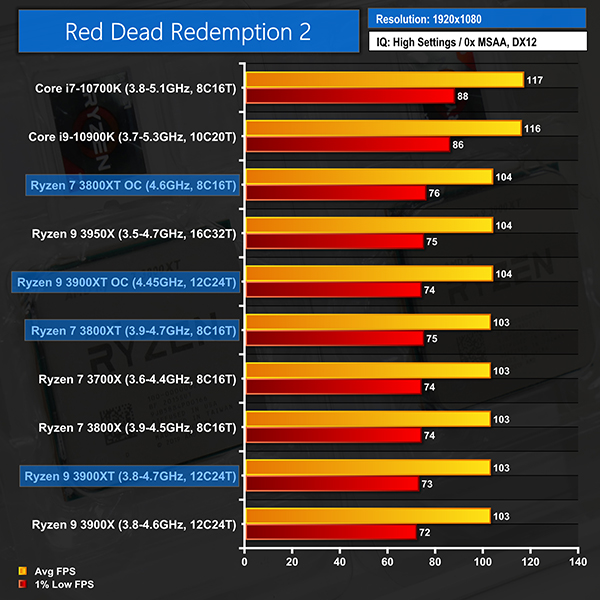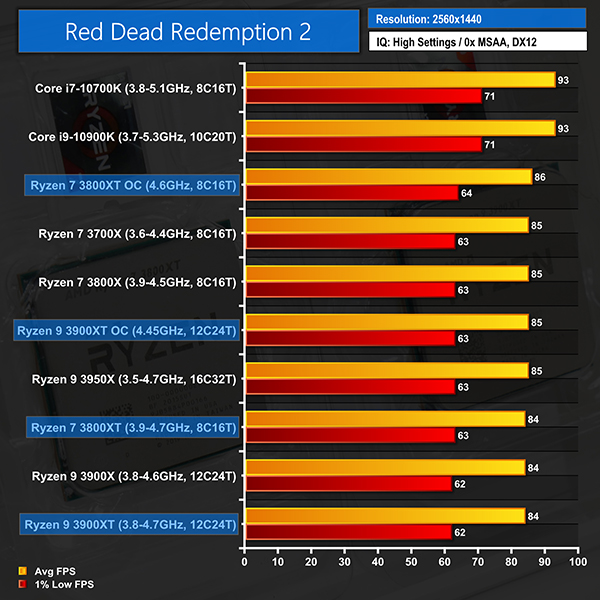Red Dead Redemption 2
We run the game with image settings manually set to High and the DirectX 12 mode enabled.
Starting gaming performance with Red Dead Redemption 2, we see that this demanding title running its DX12 mode shows very little preference between the Zen 2 parts. Average FPS and 1% low values are basically identical across the board for the Ryzen 3000 chips tested, though the higher operating clocks of the 3800XT, 3950X, and overclocked XT chips do help 1% low values very slightly.
Intel’s Core i7-10700K and i9-10900K are both faster than the competing XT chips and the rest of the Zen 2 pack. Increasing the average frame rate from just under 105 FPS for Zen 2 to a little more than 115 FPS for Comet Lake may be worthwhile to some high refresh rate gamers with a high-end graphics card.
Even with the resolution increased to 1440P, we still see that frame rates are very tightly grouped between the Zen 2 processors. The difference in performance from the 3900XT all of the way down the stack to the 3700X is within margin of error, though the heavily overclocked 3800XT does open up a small but measurable lead.
Again, Intel’s competing 10th Gen chips are faster than the Zen 2 parts. If you are gunning for more than 60 FPS at 1440P, Intel’s 10700K and 10900K are marginally better solutions with a graphics card such as our RTX 2080 Ti. However, if you do not care about that last handful of frames or simply stick to 60 FPS, all of the solutions on show will be good choices.
 KitGuru KitGuru.net – Tech News | Hardware News | Hardware Reviews | IOS | Mobile | Gaming | Graphics Cards
KitGuru KitGuru.net – Tech News | Hardware News | Hardware Reviews | IOS | Mobile | Gaming | Graphics Cards




